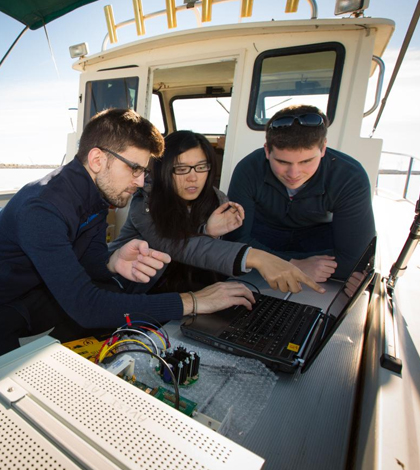Improving Underwater Data Transmission With “Smart” Radio

Students test their underwater wireless network in Lake Erie. (Credit: Douglas Levere / University at Buffalo)
Compared to networks on the ground, underwater sensors are lagging behind in being able to transmit their findings quickly and easily. This is because they don’t have an option like radio telemetry that works so easily in the air.
To make up for that disadvantage, researchers at Buffalo State University are trying to develop new ways for underwater sensor networks to communicate. They are dealing with the many issues that hamper underwater data transmission these days: path loss, delay and the Doppler effect.
To work around those difficulties, Buffalo State scientists are developing a sort of “smart” radio that originates from software and is capable of shifting between different frequencies as it needs. From there, they are looking to use the smarter radio with acoustic modems in an attempt to improve underwater data transmission rates.
The approach proved successful in a Lake Erie experiment last fall, wherein scientists saw that their techniques netted a transmission rate boost of 10 times what’s typically expected.
Top image: Students test their underwater wireless network in Lake Erie. (Credit: Douglas Levere / University at Buffalo)




0 comments